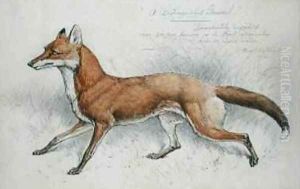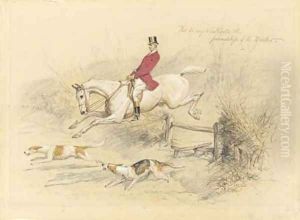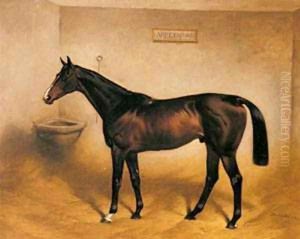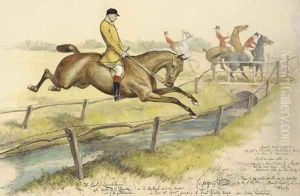Basil J. Nightingale Paintings
Basil J. Nightingale was an English artist renowned for his skill in watercolor and his evocative representations of the English countryside and its diverse wildlife. Born in 1864, Nightingale's career spanned a period of significant change in the British art world, yet he remained dedicated to the traditional landscapes and scenes that inspired his work from an early age.
Nightingale received his artistic training at the Royal College of Art, where he honed his abilities in watercolor, a medium that would become his hallmark. His early works caught the attention of both critics and the public, establishing him as a promising young artist in the late 19th century. Nightingale's art is characterized by its detailed naturalism combined with a romantic sensibility, capturing the tranquil beauty of rural England.
Throughout his career, Nightingale exhibited at major galleries and exhibitions, including the prestigious Royal Academy. His paintings were celebrated for their technical proficiency and their ability to evoke a sense of peacefulness and nostalgia. Nightingale was also a member of several art societies, which played a crucial role in the dissemination of his work and the fostering of his reputation.
Despite the shifts in artistic trends towards Modernism in the early 20th century, Nightingale remained committed to his artistic vision, continuing to produce works that resonated with his audience. His representation of animals, in particular, showcased not only his exceptional skill as a draftsman but also his deep appreciation and understanding of nature.
Basil J. Nightingale's legacy is that of a dedicated artist who captured the enduring beauty of the English landscape and wildlife with a masterful touch. His works continue to be appreciated for their technical skill and emotional depth. Nightingale passed away in 1940, leaving behind a body of work that continues to inspire and captivate audiences. His contribution to the arts is a testament to the enduring appeal of traditional landscape painting, even in the face of changing artistic movements.












